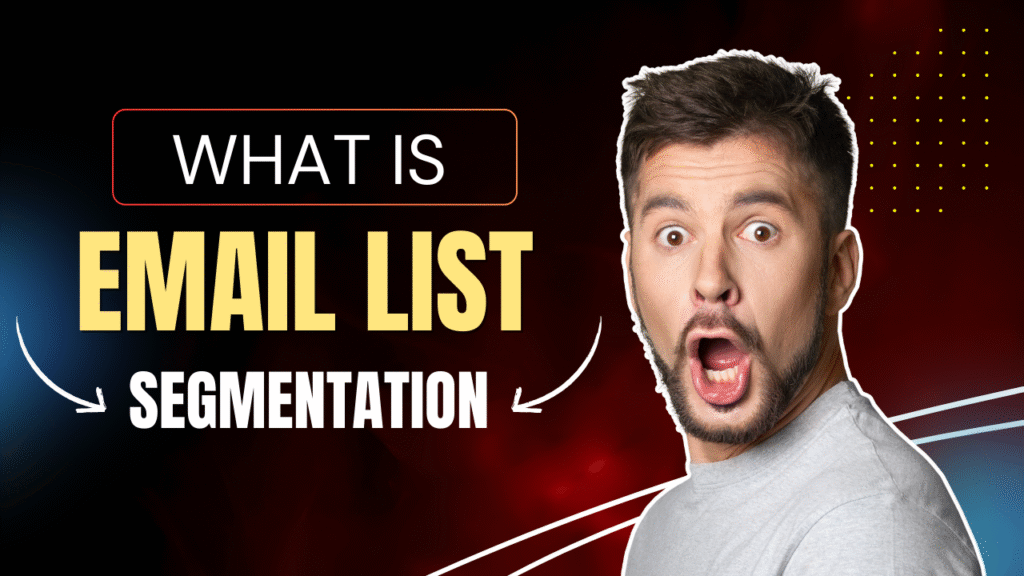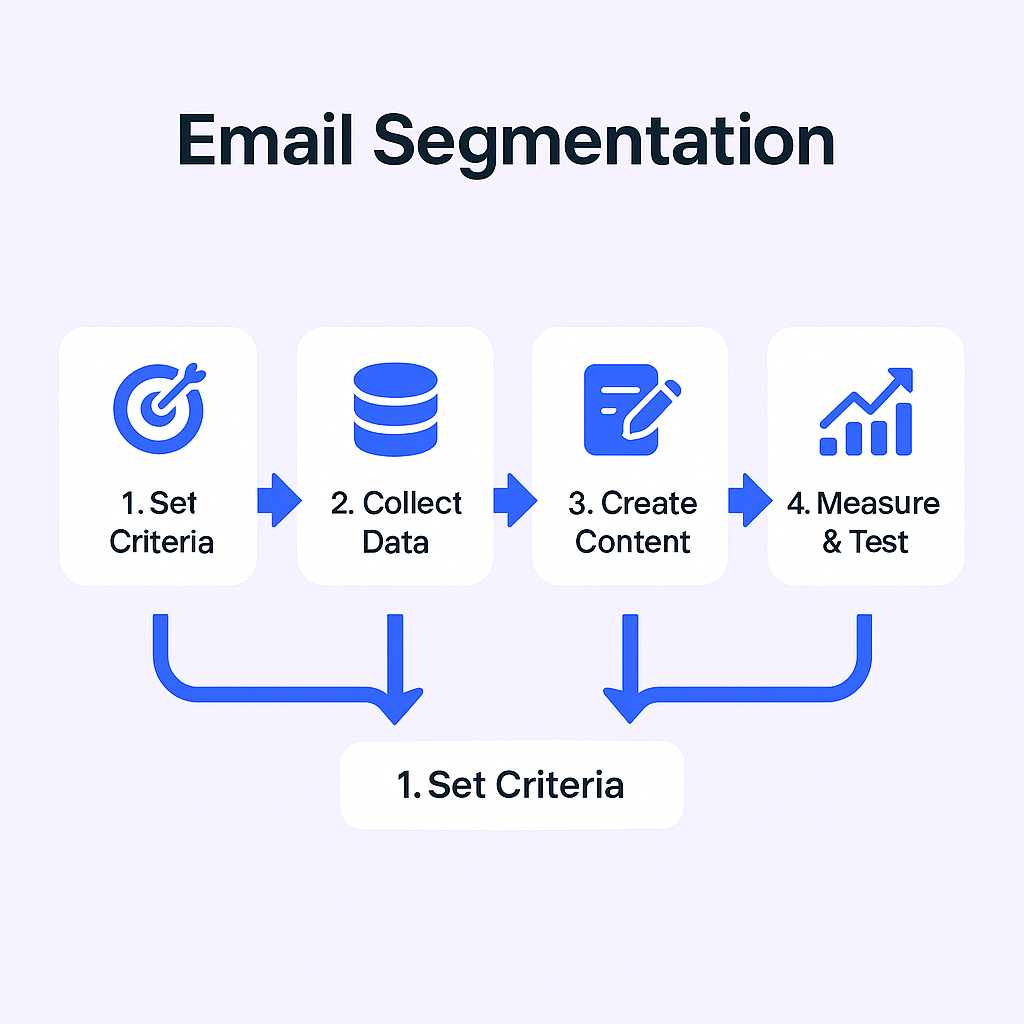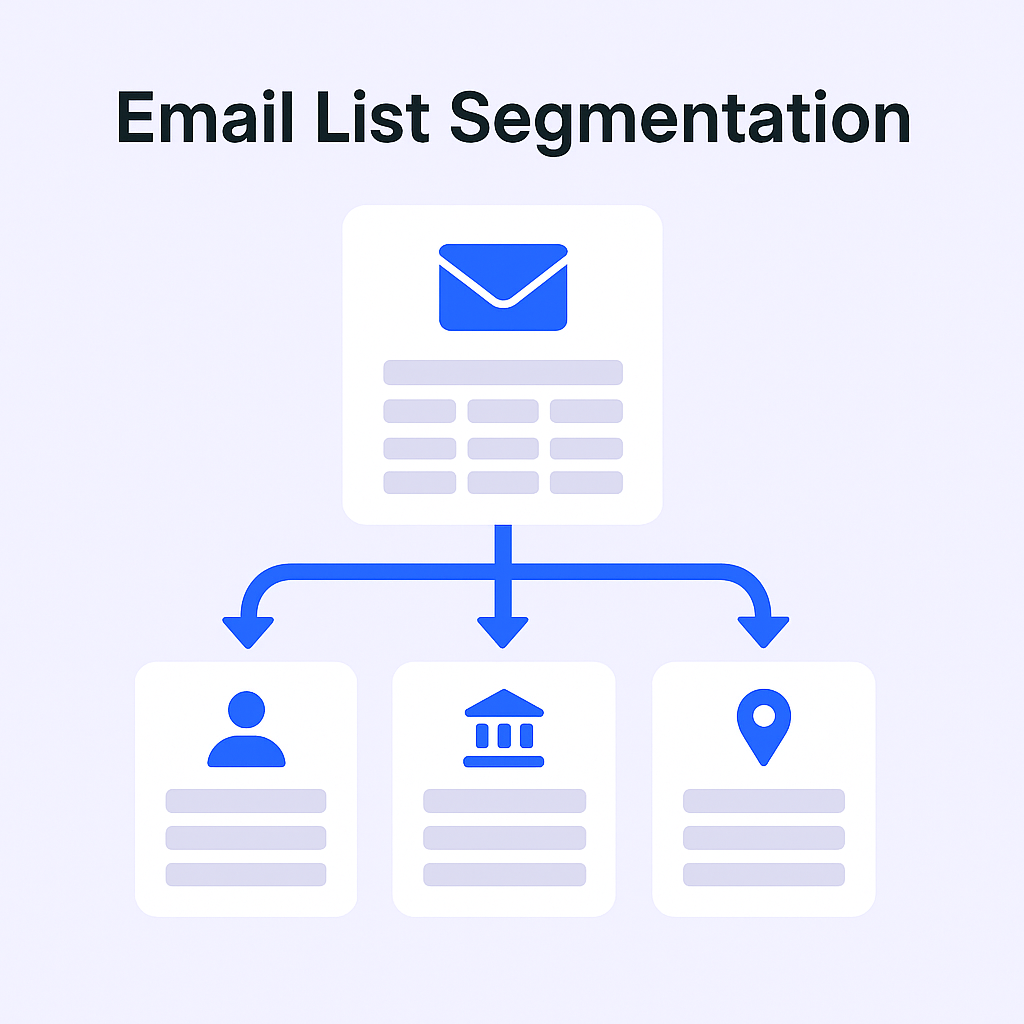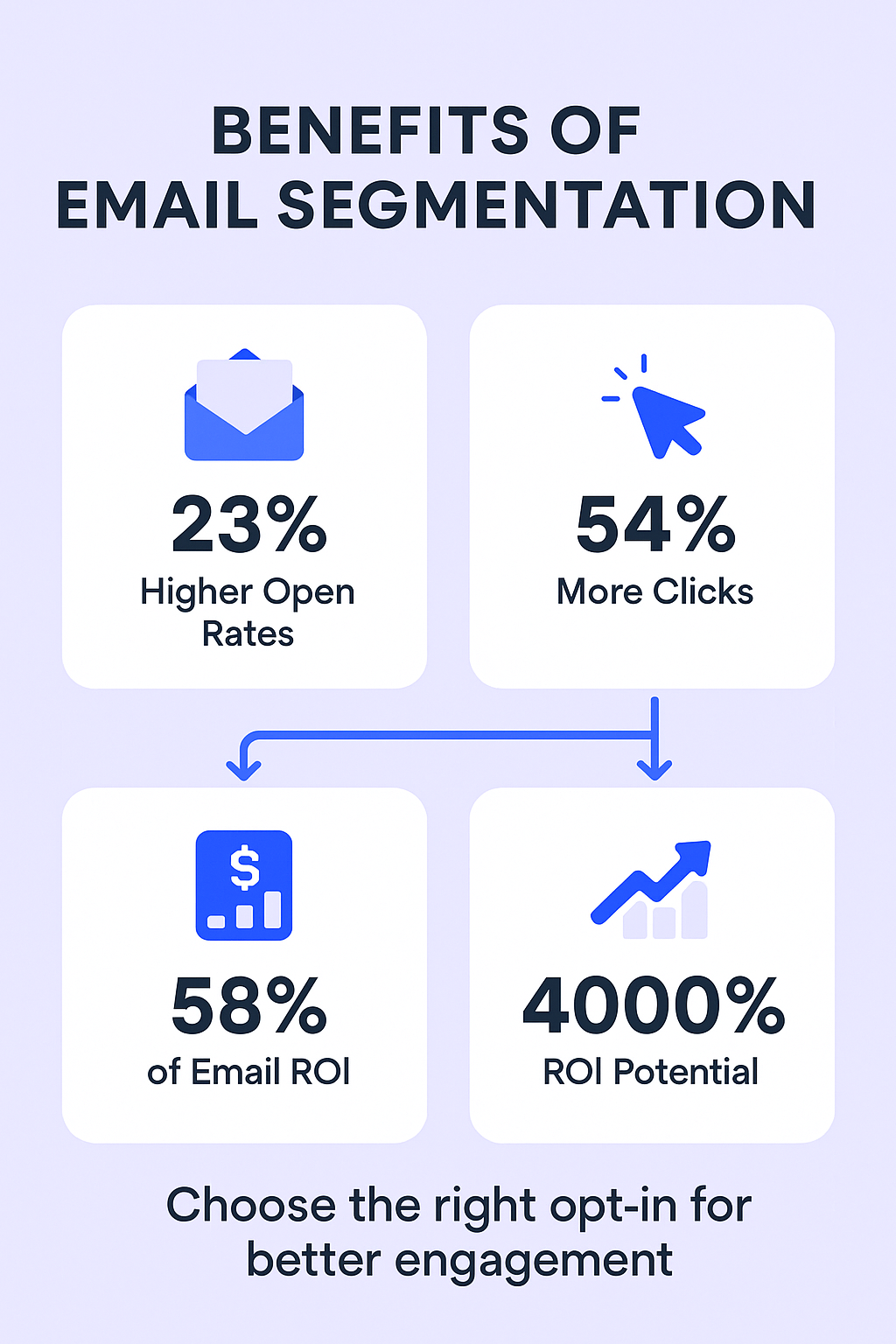- blog
- Cold Emailing
- What is Email List Segmentation? Complete Guide 2025

What is Email List Segmentation? The Complete Guide to Boost Your Cold Email Success
Table of Contents
Every Business Development Representative (BDR) and Account Executive (AE) faces the same challenge: breaking through the digital noise to connect with prospects. In today’s crowded inboxes, a generic message often becomes a lost opportunity. This is where email list segmentation becomes your secret weapon.
What is Email List Segmentation?
Email list segmentation is the strategic practice of dividing your email subscribers into smaller, targeted groups based on specific characteristics, behaviors, or preferences. Think of it as creating a GPS for your marketing messages – directing the right content to the most receptive audience.
Instead of sending one generic message to your entire email list, you craft tailored content that speaks directly to each group’s unique needs and interests. For BDRs and AEs, this precision is crucial because prospects receive countless emails daily. If your message doesn’t immediately resonate, it’s likely to be ignored.
The traditional “spray and pray” approach to email marketing simply doesn’t work anymore. Research shows that nearly half of all emails are ignored due to their generic nature. Even more telling, 71% of consumers experience frustration when shopping experiences lack personalization, and 70% of millennials express frustration with irrelevant emails.
These statistics aren’t limited to B2C interactions – B2B buyers are consumers too, and they expect the same level of relevance in their professional communications.
Email list segmentation aims to achieve exceptional relevance. It’s about delivering messages that genuinely matter to the recipient, directly influencing their willingness to engage and respond. This strategic shift moves you from broad, mass outreach to focused, meaningful conversations.
Moreover, highly relevant, segmented emails significantly improve deliverability. When recipients consistently engage with your content, it signals to Internet Service Providers (ISPs) that your emails are valuable, not spam. This enhanced sender reputation is critical for cold outreach success.
🚀 Skip List Segmentation Complexity
Our LinkedIn outbound system transforms prospects into warm connections who welcome unsegmented messages
Steps to Create Email List Segmentation
Creating effective email segments requires a structured approach. These steps will help you send emails that generate real results and close more deals.
Step 1: Set the Criteria
Before diving into segmentation, define clear objectives. Are you aiming to boost sales, re-engage dormant leads, or improve open rates for a specific email campaign? Based on these goals, determine how you’ll group your audience.
This could involve criteria such as:
- Geographical location
- Job title and seniority level
- Company size and industry
- Browsing behavior
- Purchase history
- Engagement levels
For BDRs and AEs, establishing criteria upfront ensures purposeful segmentation. Each segment serves a strategic function, helping you qualify leads faster and tailor your sales pitches more effectively.
Step 2: Collect Data and Create a Workflow
This phase involves gathering the necessary data for segment creation. Collect customer information through various channels:
- Website visitor interactions
- CRM records
- Surveys and forms
- Direct feedback from sales teams
- Social media engagement
Once you have sufficient data, set up automated workflows within your CRM or email marketing platform. For example, a prospect who downloads a specific whitepaper could automatically join a “High-Intent Lead” segment.
Progressive profiling is particularly effective for gathering data without overwhelming prospects. Instead of requesting extensive information upfront, collect individual pieces over time through ongoing engagement. This approach is especially valuable for BDRs dealing with cold leads or early-stage prospects.
The strategic application of customer data and automated emails can increase open rates by 111% and revenue by 171%. For sales professionals, this translates to reduced manual effort while keeping segments current and responsive.
Step 3: Create Tailored Content for Email Segments
This stage involves crafting messages that genuinely resonate with each segment. Develop content that reflects the unique needs, interests, or behaviors of each group. This means adapting:
- Language and tone
- Value propositions
- Call-to-action (CTA) buttons
- Case studies and testimonials
In B2B contexts, this might mean using different messaging for a CEO compared to a Marketing Manager. Emails with personalized subject lines are 26% more likely to be opened, and over 80% of marketers report improved performance when incorporating subject line personalization.
For BDRs and AEs, tailored content builds trust, addresses specific pain points, and positions your outreach as helpful conversation rather than a sales pitch.
Step 4: Measure Metrics and Test Campaigns
Email list segmentation isn’t a set-and-forget strategy. Continuously track performance by monitoring key metrics:
- Open rates
- Click-through rates
- Reply rates
- Conversion rates
- Unsubscribe rates
Experiment with different approaches – varying subject lines, adjusting email frequency, or changing content types. A/B testing is invaluable for optimization.
A/B testing can increase email marketing ROI by 83%. Businesses that consistently conduct A/B testing report an average ROI of 4200%, significantly higher than the 2300% ROI reported by those who never test.
For BDRs and AEs, continuous measurement ensures your segmentation strategy constantly improves, helping you refine your approach and enhance sales performance.
How Email List Segmentation Can Benefit You
For sales professionals, email list segmentation isn’t just a marketing concept – it’s a powerful tool that directly impacts your ability to hit quotas and close deals.
More Refined Campaign Performance
By tailoring content to specific groups, your emails achieve higher relevance. This precision results in:
- Elevated open rates as subject lines address recipient interests
- Increased clicks as content aligns with specific needs
Better response rates from prospects Segmented campaigns show 23% higher average open rates compared to non-segmented ones. Furthermore, segmented email campaigns achieve 54.79% higher clicks than non-segmented counterparts.
Segmented campaigns show 23% higher average open rates compared to non-segmented ones. Furthermore, segmented email campaigns achieve 54.79% higher clicks than non-segmented counterparts.
For BDRs and AEs, this heightened engagement means emails are not only seen but acted upon, translating directly into more qualified leads and improved response rates.
Enhanced Deliverability
Sending relevant content to engaged recipients signals to email providers that your messages are valuable, not spam. This practice maintains a strong sender reputation, ensuring emails reach inboxes rather than spam folders.
For sales professionals, if emails don’t reach the inbox, conversion becomes impossible. Enhanced deliverability ensures your prospecting efforts aren’t wasted and critical follow-up communications reach the right people.
Personalized and Targeted Promotions
Segmentation enables you to deliver promotions and content that directly address a prospect’s specific interests, pain points, or job role. This customization makes offers feel exclusive and highly relevant.
Research shows 80% of consumers are more likely to make a purchase from brands offering personalized experiences. In B2B contexts, this translates to tailoring solutions to specific industry challenges or job functions.
Enhanced Customer Experience
By understanding subscriber actions – such as downloading resources or visiting pricing pages – you can deliver content that guides them through their journey, making them feel understood and valued.
91% of consumers are more likely to engage with brands that provide relevant offers and recommendations. For BDRs and AEs, positive customer experience before prospects become customers establishes the foundation for smoother sales cycles.
Increase Your ROI
The cumulative effect of these benefits is a substantial increase in ROI for email marketing efforts. By improving engagement and conversion rates through relevant content, you maximize outreach success.
Segmented and targeted email campaigns account for over half (58%) of all email ROI. Email marketing typically generates $36-$40 for every dollar spent, equating to a remarkable 3,600% to 4,000% ROI. Some organizations report achieving ROI of 7000% or more.
📈Ready To Eliminate Segmentation Work?
LinkedIn relationship building achieves 40% response rates while segmented emails struggle with complexity
Best Ways to Segment Your Contact Database
Understanding segmentation methods is crucial for organizing your database to maximize sales effectiveness. Here are proven approaches:
Based on Demography
Demographic segmentation utilizes statistical data such as age, gender, education level, job title, or company budget. For B2B applications, focus on:
- Job title and seniority level
- Company size and annual revenue
- Department or function
- Years of experience
A cold email to a CEO should differ significantly from one sent to a technical specialist. Demographic data helps you speak the right language to the right level of decision-maker.
New Subscribers
New subscribers represent fresh leads who recently indicated interest. Send them warm welcome emails and engaging content to introduce your brand and nurture them early.
If a new subscriber downloads a “Lead Generation Guide,” they could receive a welcome series introducing your services, showcasing relevant case studies, and including a soft call-to-action for a product demo.
Geographical Location
Segment contacts by location to enable localized messaging, event invitations, or ensure emails arrive during business hours. This is particularly valuable for:
- Regional sales territories
- Local networking events
- Time zone considerations
- Compliance requirements by region
Buyer’s Persona
Create detailed profiles of ideal customers, including their interests, challenges, and pain points. Marketers report a 760% increase in revenue from email campaigns utilizing persona-based segmentation.
For example, distinguish between a “Growth-Focused Startup Founder” versus a “Risk-Averse Enterprise IT Head” – highlighting different benefits like rapid scaling versus security and compliance.
Buying Behavior or Purchase History
Segment based on website interactions, past purchases, or abandoned cart instances for re-engagement and upselling opportunities.
A prospect who repeatedly views your “CRM Integration” page could receive an email featuring integration case studies or a limited-time discount on integration services.
Interaction with Emails
Categorize contacts by engagement levels – open rates, click-through rates, or lack thereof. Identify “Email Enthusiasts” for exclusive content or “Inactive Users” for re-engagement campaigns.
This segmentation helps prioritize your outreach efforts on the most responsive prospects while developing strategies to re-engage dormant leads.
Type of Organization and Industry
This segmentation is critical for B2B sales. Divide contacts by company size, industry, or organizational characteristics.
A cybersecurity solution would send different content to a small tech startup (emphasizing ease of use and cost-effectiveness) versus a large financial institution (focusing on compliance and enterprise-grade security).
Funnel Stage
Tailor outreach based on prospect position within the sales journey – Awareness, Consideration, Decision, or Retention stages.
New leads in Awareness stage receive educational content, while “hot prospects” in Decision stage get case studies or demo invitations to build confidence and encourage conversion.
Shopping Destinations (Preferred Interaction Channel)
For B2B, this translates to understanding preferred interaction channels or content types. If prospects primarily engage with LinkedIn content, reference LinkedIn posts or invite them to LinkedIn events.
Customer Profile (Specific Needs/Use Cases)
Segment based on highly specific needs or product usage. An accounting software company might create segments for “Small Business Basic Invoicing” versus “Enterprise Complex Financial Reporting.”
The most impactful B2B segmentation often combines multiple criteria – such as Industry + Job Title + Funnel Stage – creating highly granular, hyper-relevant segments for truly bespoke messaging.
🎯Make Segmentation Irrelevant
ystematic LinkedIn outbound creates universal appeal by building authority prospects actively seek out
7-day Free Trial |No Credit Card Needed.
Why Should You Use Salesso For Email List Segmentation?
For BDRs and AEs, time is your most valuable asset. You need tools that streamline workflows rather than complicate them. Salesso is designed to supercharge your segmentation strategy and dramatically improve cold outreach results.
Massive Verified Database
Salesso provides access to 575 million+ verified B2B contacts from 15 million+ companies worldwide. Build ideal prospect lists within seconds using advanced filtering options including:
- Industry and company size
- Job title and seniority
- Geographic location
- Technology stack
99.8% accuracy rate with real-time email verification ensures maximum deliverability and eliminates wasted outreach on invalid addresses.
Effortless Segmentation and Automation
The platform integrates seamlessly with existing CRMs, allowing you to define email segments based on customer data, behavior, and demographics. Key features include:
- Custom list creation tailored to any specific criteria
- Automated email sequences with personalized follow-ups
- Behavioral tracking for open, click, reply, and conversion rates
- LinkedIn integration for unlimited email extraction
Comprehensive Sales Enablement
Salesso goes beyond email addresses, offering a complete sales toolkit:
- Unlimited Email Warm Up System for better deliverability
- AI Image Personalization for higher engagement
- CRM + Lead Scoring for better qualification
- API/Webhooks for marketing automation
The platform’s emphasis on real-time verification and 99.8% accuracy directly addresses the critical challenge of deliverability in cold email outreach. High-quality data ensures your carefully crafted messages reach intended inboxes rather than spam folders.
Ready to experience precision email list segmentation? Start your 14-day FREE trial with Salesso – no credit card required.
FAQs related to Email List Segmentation
Why should I segment my B2B email list?
How do email lists differ from email segments?
What factors should I consider when creating a B2B email marketing strategy?
Is there any tool to segment an email contact list?
Does email segmentation help in sales funnel strategies?
Conclusion
Email list segmentation transforms generic outreach into precision-targeted conversations that drive real results. By implementing the strategies outlined in this guide, BDRs and AEs can achieve higher open rates, better deliverability, and ultimately more closed deals.
The key is starting with clear criteria, collecting quality data, creating tailored content, and continuously testing for improvement. With tools like Salesso providing verified contacts and advanced segmentation capabilities, you have everything needed to revolutionize your cold email success.
Ready to transform your email outreach? Start segmenting smarter, not harder, and watch your conversion rates soar.

Beyond Complex Email Segmentation
LinkedIn outbound builds relationships that make prospects respond regardless of list organization or segmentation tactics
